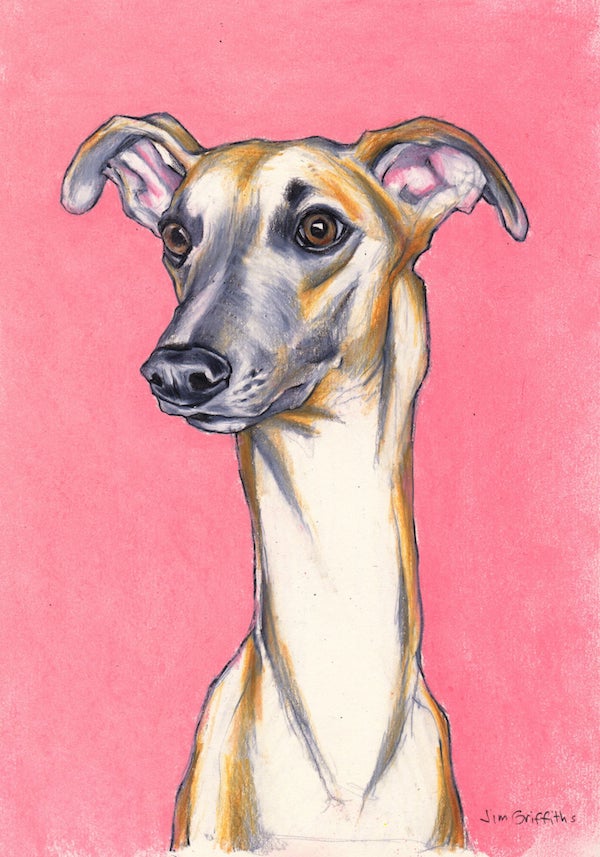
Many breeds mention necks in their standards, and often it’s in reference to length. If a standard reads, a “good length/reach of neck,” it usually means a long neck. The Azawakh, Whippet, Ibizan Hound, Sloughi, Pharaoh Hound, Petit Basset Griffon Vendéen, and Scottish Deerhound, to name a few, are all hounds whose standards call for a long neck, and if you noticed, most of these are breeds built for speed. If a dog needs speed, endurance is also important. A short neck is often the partner of a straight shoulder or a shoulder assembly that’s set too far forward, and when the shoulder blade cuts into the length of neck and the shoulders are too steep, it makes the neck too short.
Such a neck is a problem in running breeds because to maximize their reach, a dog with a short neck tends to lower its head. When he or she lowers their head, it can create a roach in the topline. A short neck is also a problem because a poorly placed shoulder assembly will cause the dog to lose its centre of gravity and the joints will weaken in their attempt to compensate for being unable to support the body, much of which is largely supported on the dog’s front column (or two front legs).
Needless to say, a dog with good shoulders will have superior reach over the one that doesn’t, and neither will it tire as quickly. When a neck is of inadequate length for its breed, it is said to have a “short, stuffy neck.” It’s important to remember not to assume that a “long” neck is the same as a neck of “moderate length.” All of this really depends upon the breed and its function. Note: The dog seen in the image here clearly does not have a short, stuffy neck.
Image: Whippet by Jim Griffiths of JimGriffithsArt may be purchased here.
